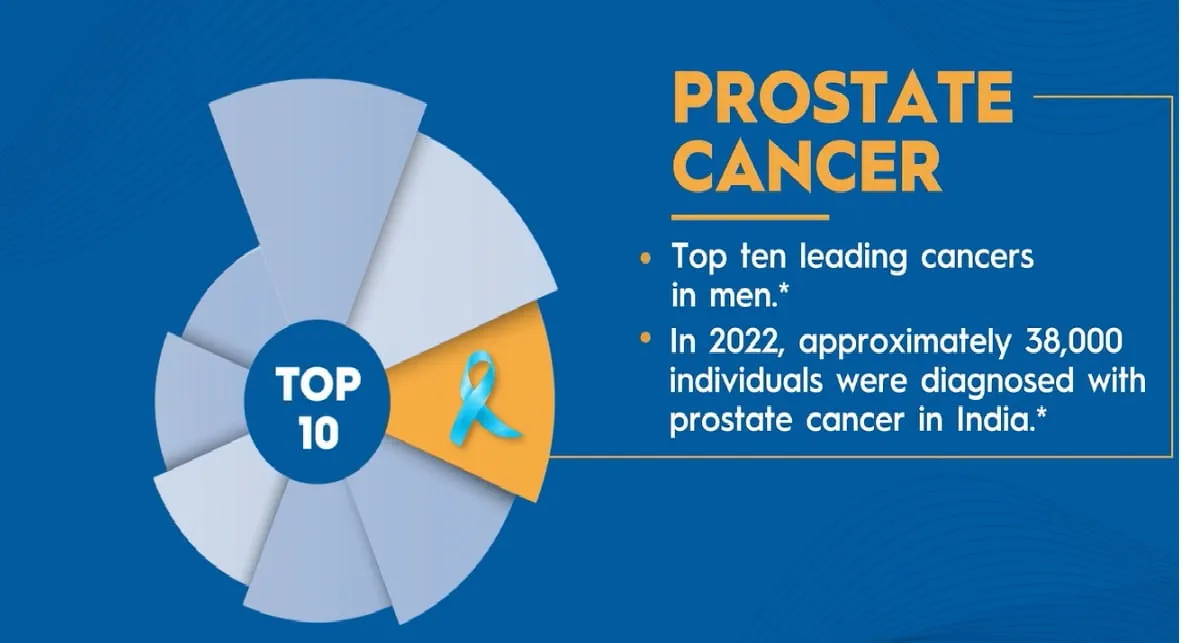EAU 2024: Take Home Message – Prostate Cancer by A. Villers
The session focusses on summarizing on some selected topics in the EAU conference 2024. In this session, Dr. Villers discussed what is new in early detetction of prostate cancer.
It is found that compliance on invitation ranged from 38 to 65. The percent of positive biopsies in all these studies were good and ranged from 60 to 92. This indicates that the selection of biopsy indication has quite improved. In reference to the implementation of the European Union (EU) recommendations, it was observed that manpower restrictions, waiting lists, and magnetic resonance imaging (MRI) resources may become dominant factors for early detection programs. First line selection of high-risk men appears efficient. High-risk men include those with mid-life (45 or 50 years) with prostate-specific antigen (PSA) > 1.5 ng/ml, with family history of prostate and breast cancers and of African descent. EU risk-based stepwise approach offers attractive, personalised options. The Lancet Commission suggests to improve diagnosis and integrate prostate cancer in men's health. The BRCA2 carrier frequency is quite low (1/370 men) in the general European population. Men with BRCA mutation have a higher positive predictive value for PSA.. There is a higher positive predictive value (PPV) for prostate cancer with at PSA > 3:48 (%) versus 33%. They are diagnosed at a younger age (61 years) and are more likely to have intermediate or high-risk disease. They have higher reclassification rates and are more likely to have Grade Group grade on active surveillance. They also have poorer outcomes in metastatic and cancer-specific survival.
With respect to prostate cancer predisposition genes, among men diagnosed with prostate cancer, 16% have pathogenic gene variants. The EU guidelines recommend that genetic testing at Tudor level of a pathogenic variant for DNA damage repair gene (DDR) should be performed. Germline testing in men with prostate cancer, family history, early onset or metastatic at diagnosis should be done for 9 genes. What is upcoming is genomic risk score a combination of polymorphisms that modifies risk of the cancer with and without a predisposing gene. The ProBE prostate cancer randomised controlled trial compared the transrectal versus transperineal prostate biopsy in detecting clinically significant prostate cancer. The trial showed no difference in infectious complications (1/6% versus 1.7%), no difference in cancer detection rates (47% versus 43% for grade group 2 and 72% versus 70% for all cancers respectively). This trial provided consistent data on the approach and that neither approach is more sensitive at detecting cancer when using the systematic or targeted approach. Transperineal approach is the preferred approach based on antibiotic stewardship in Europe. Transrectal is reasonable approach with targeted prophylaxis. The management of biochemical recurrence after radical prostatectomy is multifocal. Low risk is PSA doubling time > 1 year and grade Group < 4. High risk is PSA doubling time < 1 year and Grade Group 4 or 5. After risk stratification, imaging and patient factors should be taken into consideration. Early salvage radiation fossa should be performed in PSA < 0.5. Alternative therapeutic options include intensified ablation therapy where prostate-specific membrane antigen (PSMA) is positive. The management of locally advanced prostate cancer with nodal disease, with PSMA-PET changing the treatment options, doctors need to adapt their recommendations at the time of radical prostectomy. After surgery, if the disease is organ-confined and PSA is < 0.01 ng/ml and only a single positive, the patient can be observed only. Radiation therapy needs long-term adjuvant therapy (ADT) plus a boost on the remaining prostate and systemic therapy. Systemic therapy is a standard of care in patients with clinical node positive as it is seen that intensification improves outcomes. In case of low volume metastatic de novo situation, ADT plus PARP inhibitors should be considered. Doclitaxel can be added to this regimen only if the patient is fit, young and with bone disease. Prostate radiation can be considered to prevent genitourinary symptoms. In high-volume metastatic, trial; the treatment should be the initial approach and radiation therapy to the prostate gland can be added. In low-volume prostate with relapse, there is scarce data on the effect of PARP inhibitors and radiation therapy to metastasis is currently being tested.
European Association of Urology (EAU) Annual Congress 2024, 5th April - 8th April 2024, Paris, France




